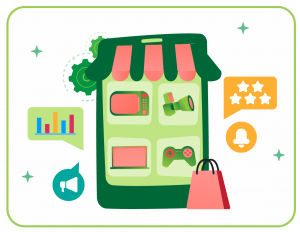Let’s imagine for a second that you have an amazing new product or service that is just better than anything the competition has. You have prototyped it, launched it locally and then expanded little by little (or very fast) and now you sit comfortably in a strong position on your local market.
One day you think “Shouldn’t we expand?” and you find yourself in the world of international distribution and eCommerce translations.
You have many options, which require you to consider your product or service, your average ticket, and your budget.
The one thing that all options have in common is that, in all of them, you need to make sure that you communicate in the language of your target market, and it needs to be done right. Google translating it isn’t going to cut it. You will need to work with a partner that can support you with eCommerce translations.
You must be able to provide customer support in your target audience’s language as well. In some platforms it is even a strict requirement.
Option 1: Selling on social networks
This is a quite popular and relatively low budget option for selling your products. Besides its relatively low cost, the other upside is that it gives you direct contact with your potential customers.
It will require some knowledge of how to run ad campaigns but there is enough reference material to start.
The upside to this approach is that social networks have enormous user bases you can access.
The downside is that when there are issues, the support you can get from these platforms isn’t always great. Another downside is that you don’t control the platform.
Option 2: Selling in an online Marketplace (for example Amazon, MercadoLibre, AliExpress, etc.)
This option requires a bit more work and it is recommended that you work with a specialist that can help you post your products, organize them, work with the SEO and with promoted campaigns.
The main advantage is that you are placing your products on platforms that receive millions of shoppers every day.
The downsides are that sometimes it can be difficult to stand out from the competition, and also that the platform takes a portion of your earnings.
In this case you don’t control the platform either, but the level of support in case of issues tends to be better.
Option 3: building your own store
If you want full control of your store, you can build your own on your website. You have a wide range of options from building your own solution to working with a pre-packaged eCommerce solution like Woocommerce for WordPress.
You need to make sure that the site is optimized for all platforms, including tablets and smartphones. Even though statistically most of the purchases are made from computers, people tend to use their phones to find information about what they want to buy.
Your main goal will be to design a process and interface that leads the client step by step all the way to the purchase while also keeping in mind all of the steps that take place after the purchase, like delivery, problem resolution and feedback gathering.
It’s always a good idea to include recommendations for your customers in order to bring attention to other products. It is also worth it to explore the idea of including Remarketing in your strategy (that is, to follow somebody who has left the purchase process unfinished with targeted Google Ads).
If you decide to create your own eCommerce website it is recommended that you work with a developer and specially with an UX Designer, as designer they will help you design a website that adapts to your business, and to your customers specifically.
The upside of this approach is that you are the sole Proprietor. Your products get all the visibility, and you have full control.
The downside is that this requires more time, larger budget and more work.
Regardless of the option you choose, please rest assured that at Australis Localization we are ready to help you with eCommerce translations, with over 90 language combinations available. Contact us today and tell us more about your eCommerce strategy.


Comment (1)
Website Localization: Should You Translate Your Website?
13 September, 2021[…] your goal is to reach international markets, there’s no better way than to localize your website for those markets. But be careful! Customers […]